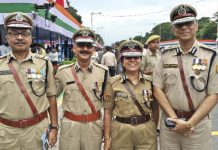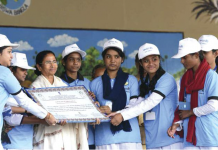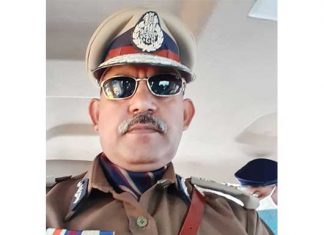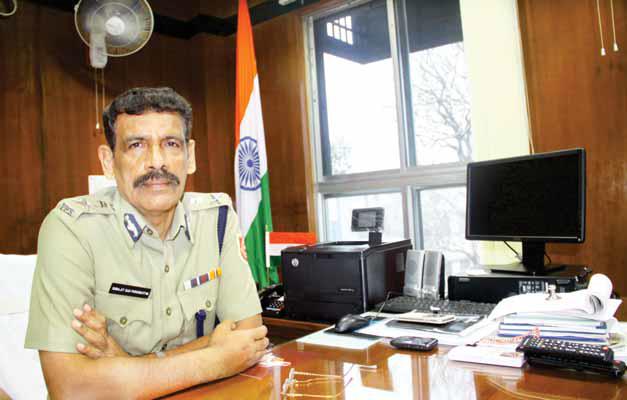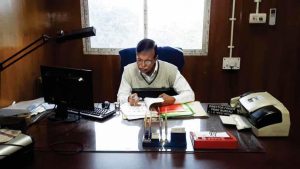 Crime does not pay. It is just not a saying but a proven fact. A criminal no matter how clever he is, usually leaves some clues. Besides, each person has identifiable physical features particularly fingers. So, the finger prints became considered as one of the tools for the detection of crime.
Crime does not pay. It is just not a saying but a proven fact. A criminal no matter how clever he is, usually leaves some clues. Besides, each person has identifiable physical features particularly fingers. So, the finger prints became considered as one of the tools for the detection of crime.
 The first Finger Print Bureau in the world was formed under the leadership of Mr. E.R. Henry on June, 1897 the then Inspector General of Police, Lower Province of Bengal at Writers’ Building. The practice of using finger prints as a method of identifying an individual has been in use since late nineteenth century when Sir Francis Galton (Pioneer of Finger Print Science) defined some points or characteristics from which finger prints can be identified. These ‘Galton points or characteristics’ are the foundation for the science of finger print identification. He proved it scientifically. It is an infallible science, conclusive evidence and the cheapest way which plays an important role in establishing identification of an individual in the field of detection of crime. Since the inception of Finger Print Bureau, the first detection of crime through finger print was established in the case of “State vs. Kangalicharan” in 1898. It was ended with the conviction which was upheld by the Supreme Court.
The first Finger Print Bureau in the world was formed under the leadership of Mr. E.R. Henry on June, 1897 the then Inspector General of Police, Lower Province of Bengal at Writers’ Building. The practice of using finger prints as a method of identifying an individual has been in use since late nineteenth century when Sir Francis Galton (Pioneer of Finger Print Science) defined some points or characteristics from which finger prints can be identified. These ‘Galton points or characteristics’ are the foundation for the science of finger print identification. He proved it scientifically. It is an infallible science, conclusive evidence and the cheapest way which plays an important role in establishing identification of an individual in the field of detection of crime. Since the inception of Finger Print Bureau, the first detection of crime through finger print was established in the case of “State vs. Kangalicharan” in 1898. It was ended with the conviction which was upheld by the Supreme Court.

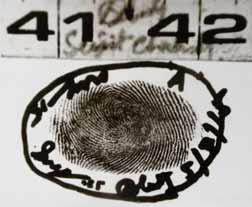 Finger print rests on two basic principles, (a) A person’s friction ridge doesn’t change ever in his lifetime, (b) No individual has same friction ridges with another. Even monozygotic twins have different fingerprints.
Finger print rests on two basic principles, (a) A person’s friction ridge doesn’t change ever in his lifetime, (b) No individual has same friction ridges with another. Even monozygotic twins have different fingerprints.
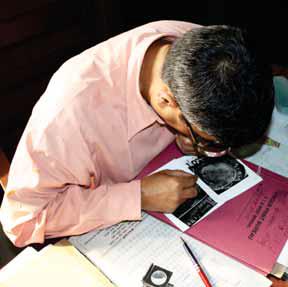 Opinion of finger print is accepted by the court in identifying a fake deed, in heinous crimes and all such impersonification activities. Finger Print Bureau performs all such activities laid down in Police Regulations of Bengal, mainly examination and comparison of finger prints of criminals whose ten-digit prints and exhibits come from courts and police stations in West Bengal and other states. The documents of various cases from different courts and police stations are sent here for ascertaining genuineness of those. Several heinous crimes are solved with the help of Finger Print Bureau.
Opinion of finger print is accepted by the court in identifying a fake deed, in heinous crimes and all such impersonification activities. Finger Print Bureau performs all such activities laid down in Police Regulations of Bengal, mainly examination and comparison of finger prints of criminals whose ten-digit prints and exhibits come from courts and police stations in West Bengal and other states. The documents of various cases from different courts and police stations are sent here for ascertaining genuineness of those. Several heinous crimes are solved with the help of Finger Print Bureau.
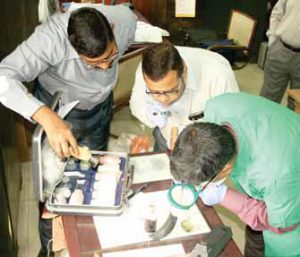 Consider the case of a brutal murder which took place in a house under Phansidewa police station where finger print experts developed two chance prints, one of which developed on the handle of a steel almirah measuring “1cm/2cm”. The size of the chance print was too small because the handle of the almirah was divided by a thick horizontal line, which breaks the print into two parts. One of the parts was identical to the right thumb impression of the miscreant.No two finger prints are alike unless they are produced from the same finger of the same person. “Faces can lie but finger print never”.
Consider the case of a brutal murder which took place in a house under Phansidewa police station where finger print experts developed two chance prints, one of which developed on the handle of a steel almirah measuring “1cm/2cm”. The size of the chance print was too small because the handle of the almirah was divided by a thick horizontal line, which breaks the print into two parts. One of the parts was identical to the right thumb impression of the miscreant.No two finger prints are alike unless they are produced from the same finger of the same person. “Faces can lie but finger print never”.
Debasis Ghosh, Director-in-charge,
Finger Print Bureau, CID, West Bengal


